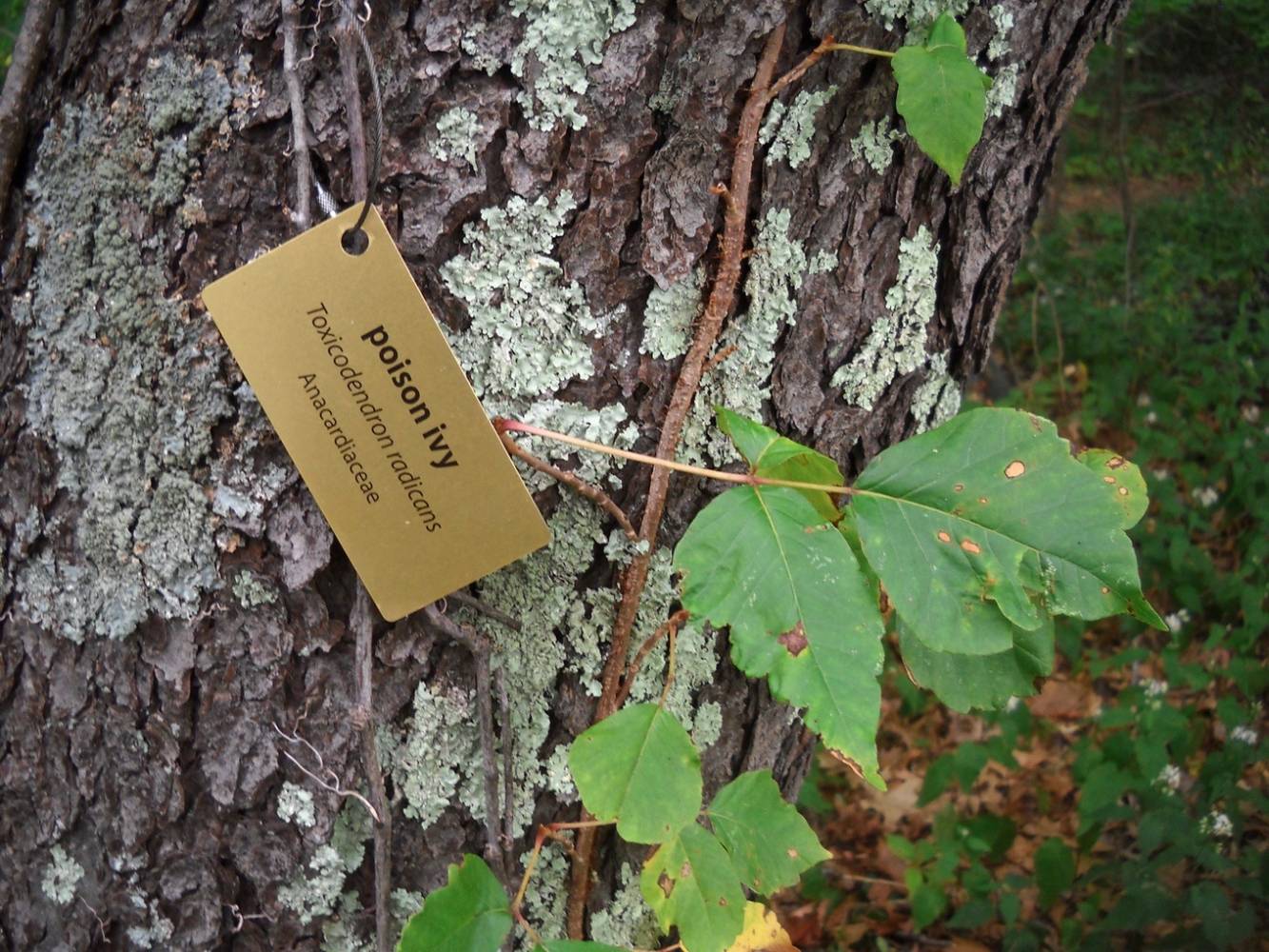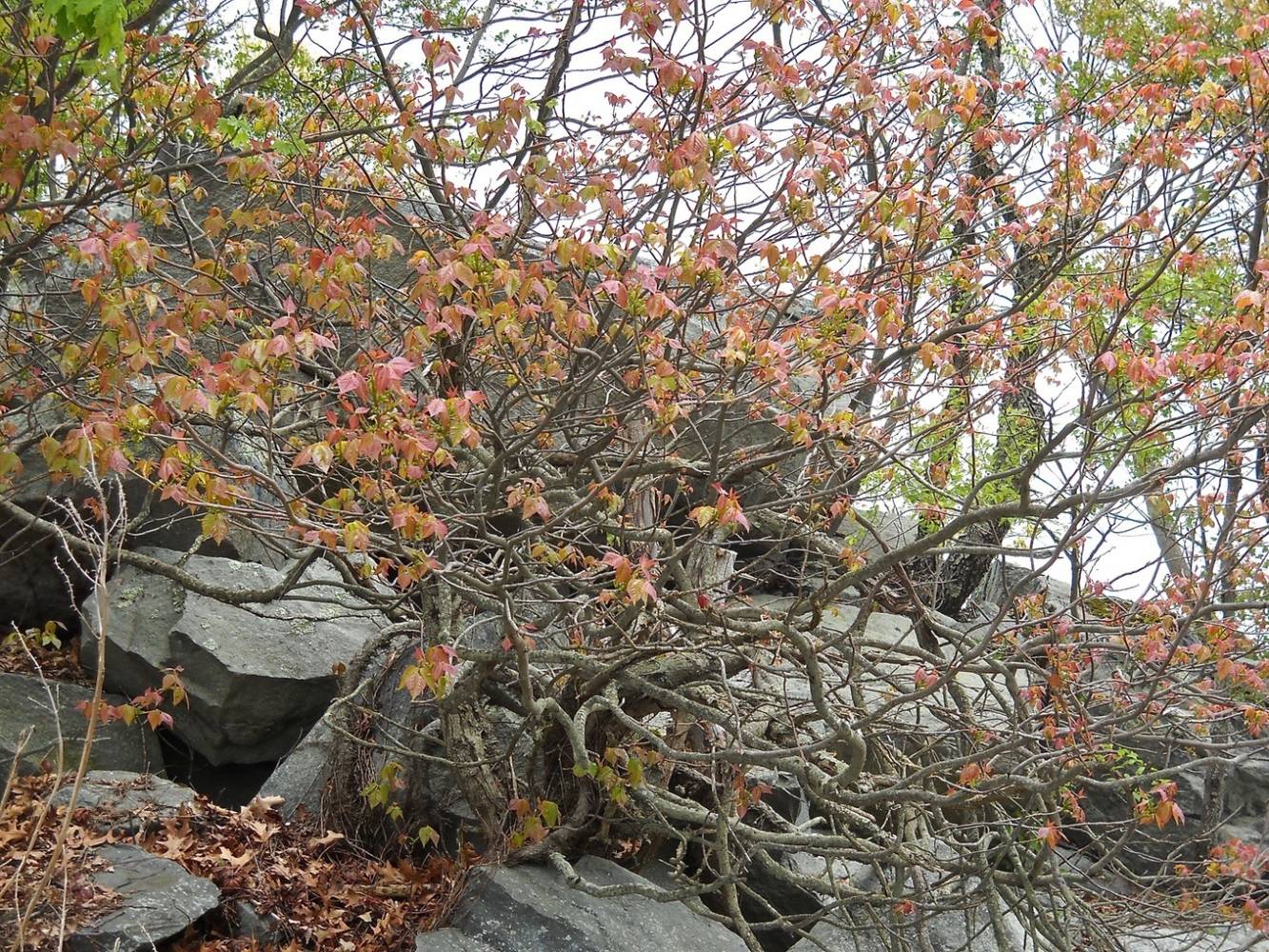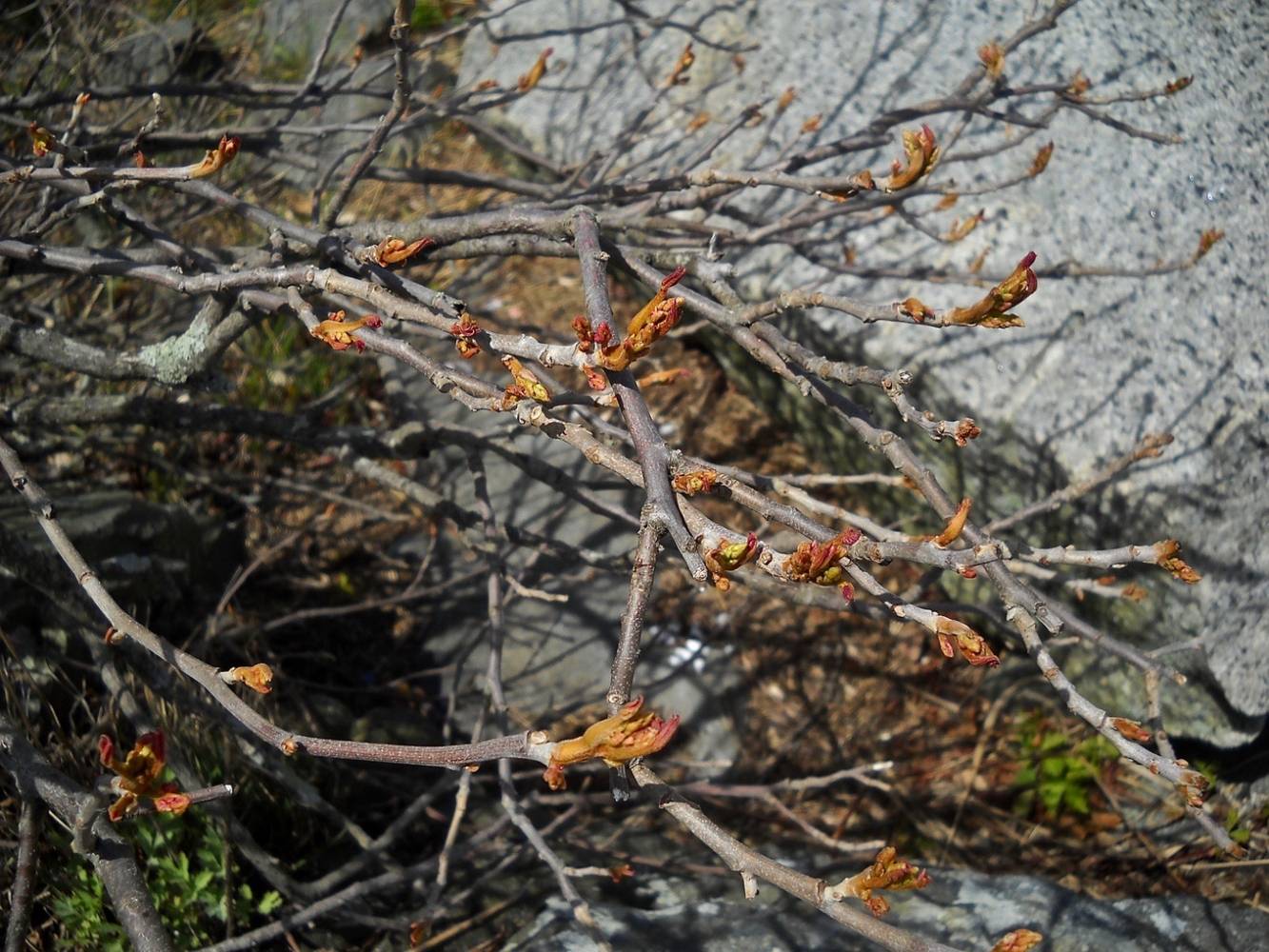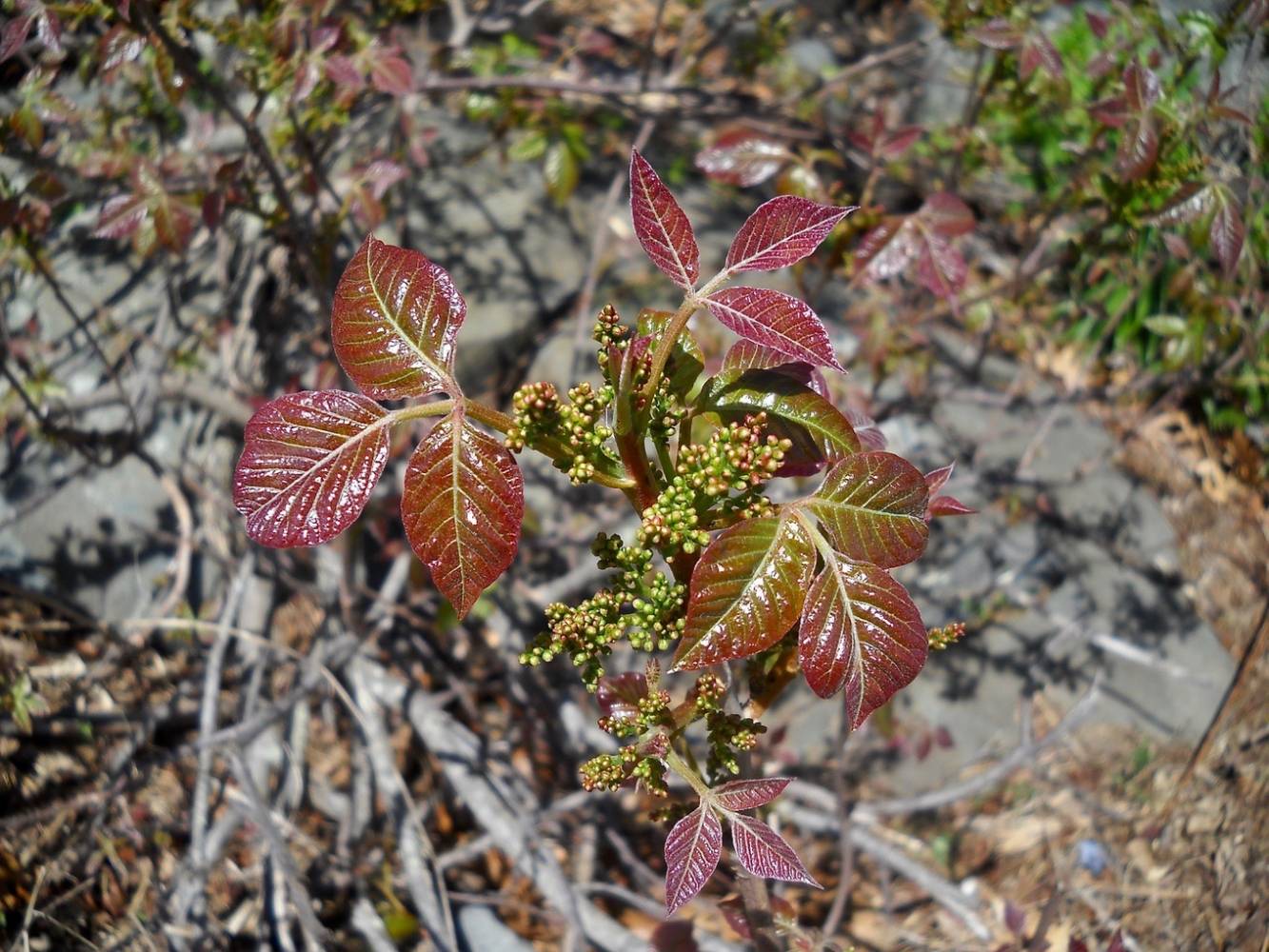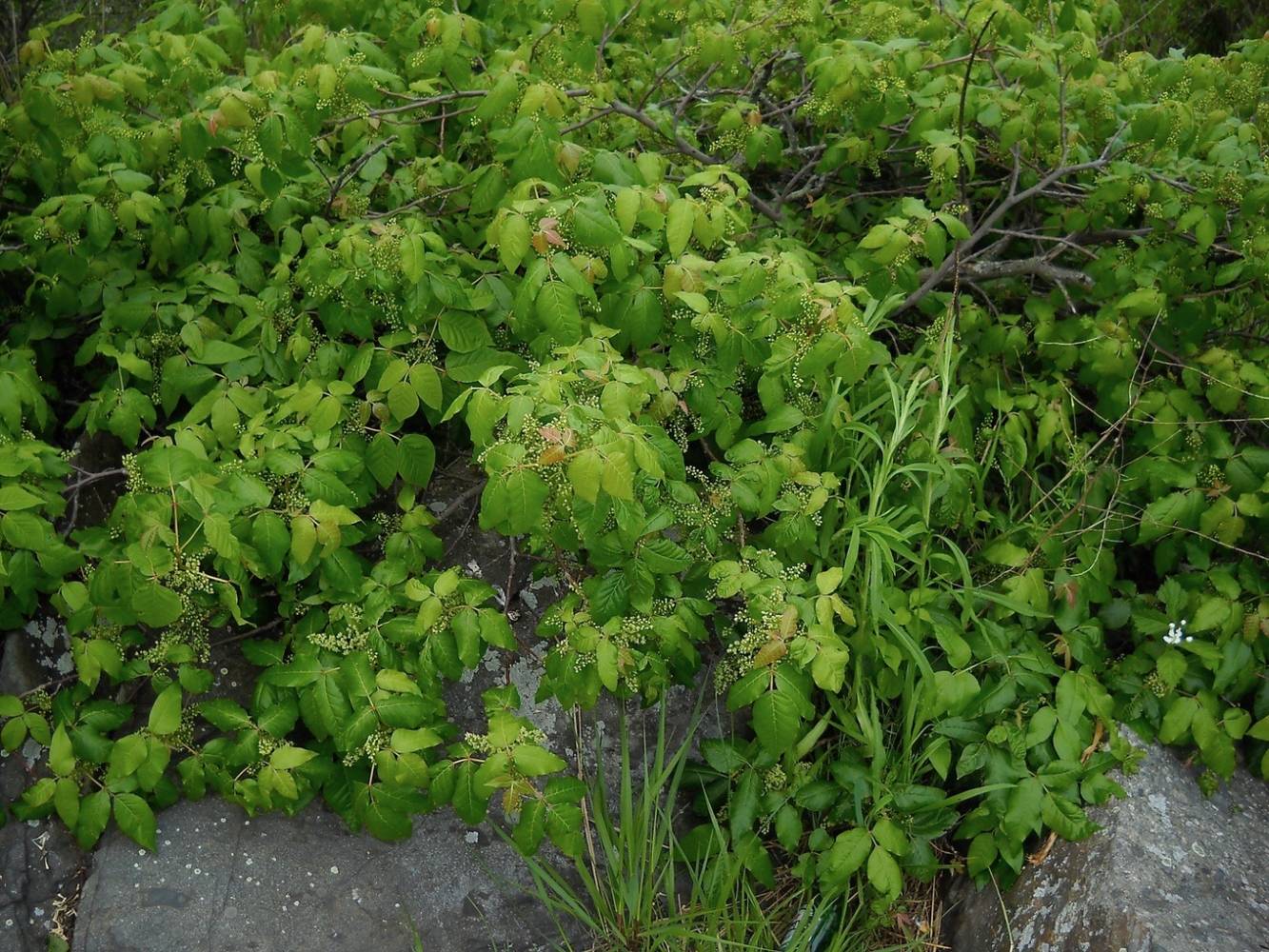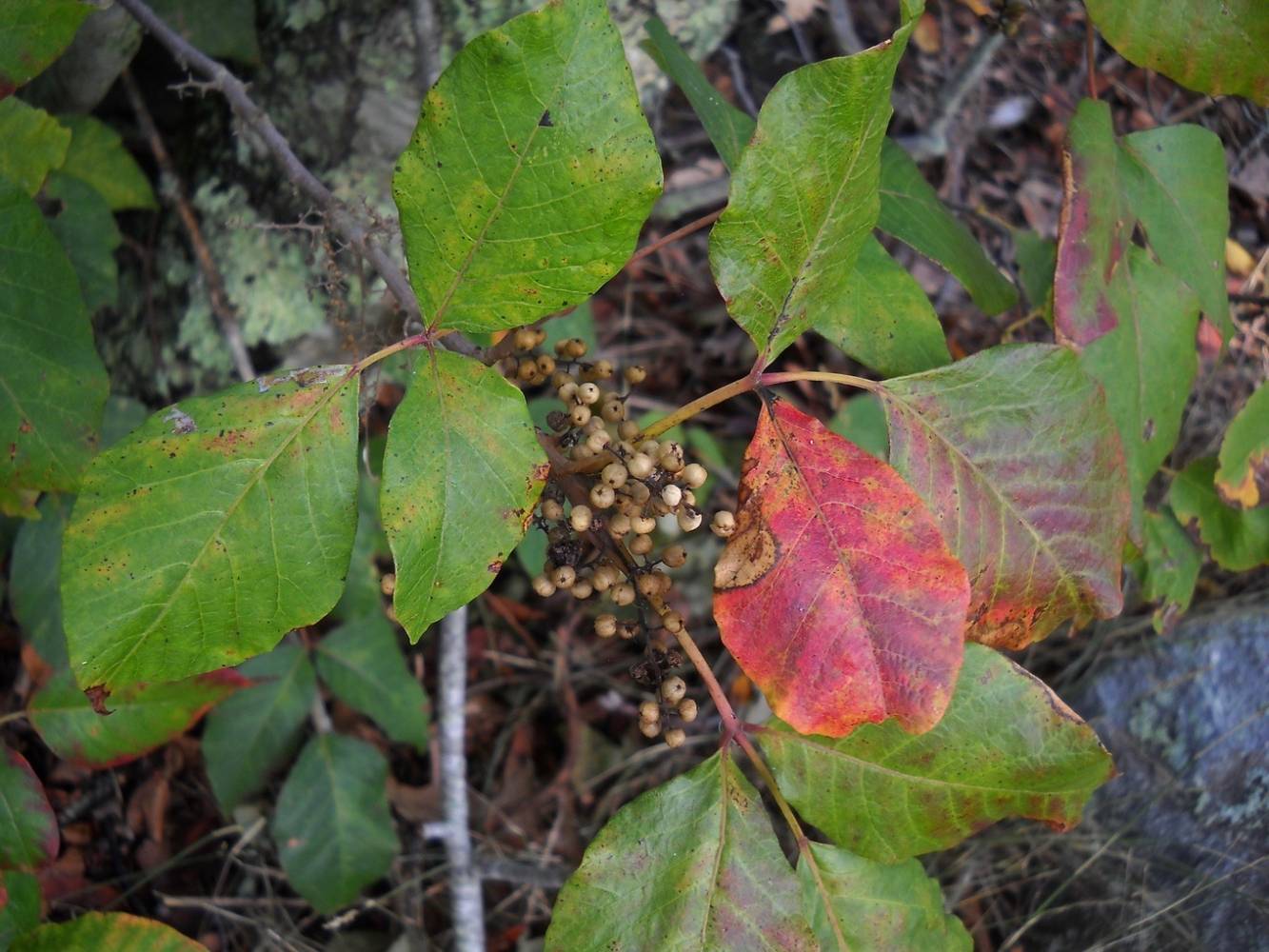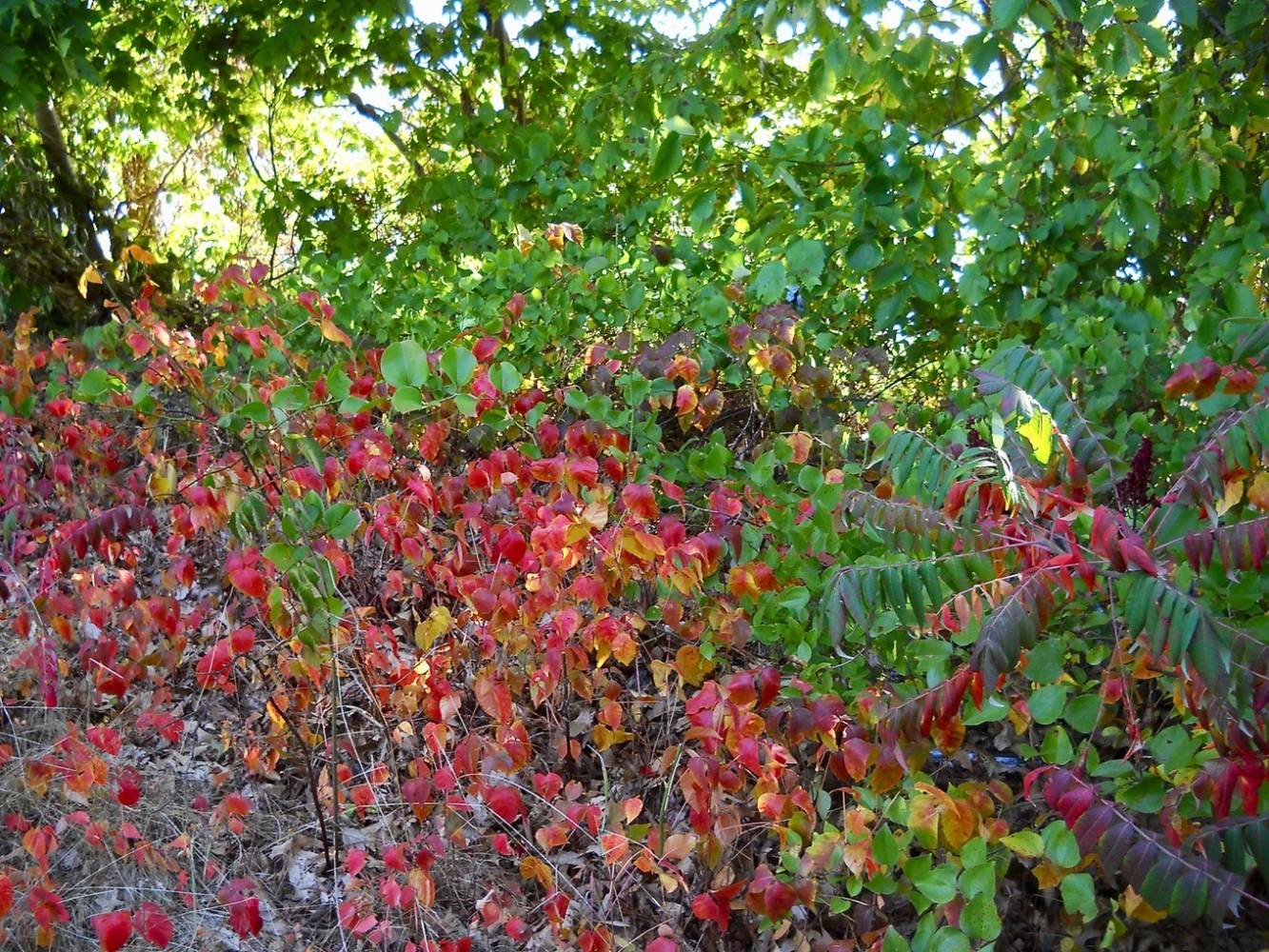poison ivy
Salter Grove is home to the largest poison ivy plant you are likely to see. The 10-foot tall shrub sends out far reaching branches from the base of the rubble pile near the start of the Marsh Trail. Most visitors walk past without a glance because they are more familiar with poison ivy as a ground cover or a woody vine on the trunk of trees.
It is a native plant of the U.S. east of the Rockies, in the maritime provinces of Canada, the mountainous regions of Mexico and some parts of China.
It is listed as a noxious weed because the majority of people living within its range have allergic reactions, sometimes quite severe, with contact to urushiol, an oily compound found in all parts of the plant. Even the botanically uninterested will learn to recognize this plant after a single encounter because of the unpleasant skin rash that can last for weeks.
The best remedy is thoroughly washing the area of contact as soon as possible with alcohol or soap and water to avoid inadvertently spreading the oily urushiol to other parts of the body. Urushiol can remain active for several years so it would be important to thoroughly wash items brought in contact with the oil.
Studies indicate that since the 1960's, Poison Ivy has doubled its growth rate and potency of urushiol in response to higher levels of atmospheric carbon dioxide. This is not good news for humans but good for the many species of wildlife that feed on its fruits.
For more information:
https://gobotany.nativeplanttrust.org/species/toxicodendron/radicans/
http://dendro.cnre.vt.edu/dendrology/syllabus/factsheet.cfm?ID=128
http://www.florafinder.com/Species/Toxicodendron_radicans.php
https://www.thespruce.com/poison-ivy-poison-sumac-and-poison-oak-identification-2131202
https://en.wikipedia.org/wiki/Toxicodendron_radicans
https://www.npr.org/sections/health-shots/2023/09/17/1199909434/poison-ivy-rash-climate-change

